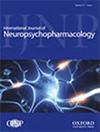2006-2021年台湾某公立精神病院精神分裂症患者氯氮平加长效注射抗精神病药物出院
IF 4.5
2区 医学
Q1 CLINICAL NEUROLOGY
引用次数: 0
摘要
背景:一些接受氯氮平治疗的精神分裂症患者出现反应不足和依从性问题。本研究的目的是比较使用三种氯氮平治疗方案的精神分裂症患者出院后6个月内再住院的时间。此外,还探讨了各组处方率的时间趋势。方法:选取2006年1月1日至2021年12月31日从研究医院出院的精神分裂症患者(n = 3271)。出院时氯氮平处方类型分为3组:氯氮平加长效注射抗精神病药物(氯氮平+ LAIs)、氯氮平加其他口服抗精神病药物(氯氮平+ OAPs)、氯氮平单药治疗。采用生存分析比较三组患者出院后6个月内再住院时间。采用Cochran-Armitage趋势检验分析各组处方率的时间趋势。结果:氯氮平+ LAIs出院的患者再住院时间明显长于氯氮平+ OAPs或氯氮平单药治疗。氯氮平+ LAIs和氯氮平+ OAPs的处方率随着时间的推移而显著增加,而氯氮平单药治疗的处方率显著降低。结论:与氯氮平+ OAPs组相比,氯氮平+ LAIs组再住院风险较低,氯氮平处方剂量较低。因此,如果单独服用氯氮平的患者需要第二种抗精神病药物,应尽早考虑使用LAIs。本文章由计算机程序翻译,如有差异,请以英文原文为准。
Schizophrenia Patients Discharged on Clozapine Plus Long-Acting Injectable Antipsychotics From a Public Psychiatric Hospital in Taiwan, 2006-2021.
Abstract Background Some schizophrenia patients treated with clozapine experience an inadequate response and adherence problems. The purpose of this study was to compare time to rehospitalization within 6 months in schizophrenia patients discharged on 3 clozapine regimens. Additionally, the temporal trend of prescription rate in each group was also explored. Methods Schizophrenia patients discharged from the study hospital from January 1, 2006, to December 31, 2021, (n = 3271) were included in the analysis. The type of clozapine prescribed at discharge was divided into 3 groups: clozapine plus long-acting injectable antipsychotics (clozapine + LAIs), clozapine plus other oral antipsychotics (clozapine + OAPs), and clozapine monotherapy. Survival analysis was used to compare time to rehospitalization within 6 months after discharge among the 3 groups. The temporal trend in the prescription rate of each group was analyzed using the Cochran-Armitage Trend test. Results Patients discharged on clozapine + LAIs had a significantly longer time to rehospitalization than those on clozapine + OAPs or clozapine monotherapy. The prescription rates of clozapine + LAIs and clozapine + OAPs significantly increased over time, whereas the prescription rates of clozapine monotherapy significantly decreased. Conclusions Compared with the clozapine + OAPs group, the clozapine + LAIs group had a lower risk of rehospitalization and a lower dose of clozapine prescribed. Therefore, if a second antipsychotic is required for patients who are taking clozapine alone, LAIs should be considered earlier.
求助全文
通过发布文献求助,成功后即可免费获取论文全文。
去求助
来源期刊
CiteScore
8.40
自引率
2.10%
发文量
230
审稿时长
4-8 weeks
期刊介绍:
The central focus of the journal is on research that advances understanding of existing and new neuropsychopharmacological agents including their mode of action and clinical application or provides insights into the biological basis of psychiatric disorders and thereby advances their pharmacological treatment. Such research may derive from the full spectrum of biological and psychological fields of inquiry encompassing classical and novel techniques in neuropsychopharmacology as well as strategies such as neuroimaging, genetics, psychoneuroendocrinology and neuropsychology.

 求助内容:
求助内容: 应助结果提醒方式:
应助结果提醒方式:


